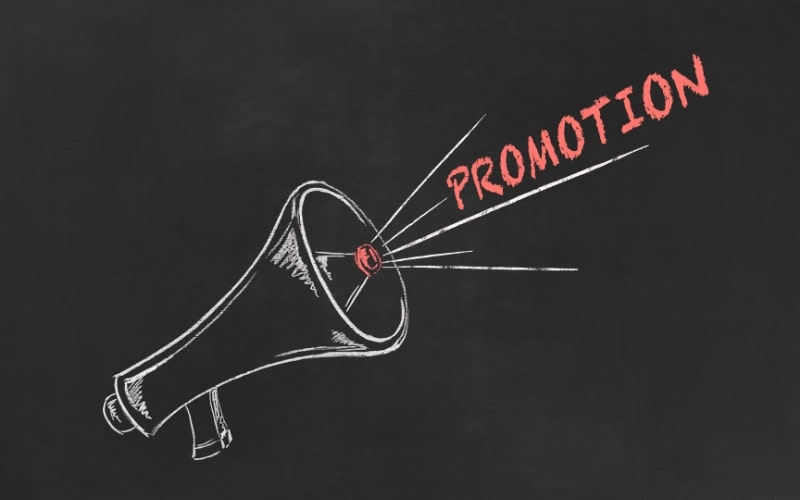Pinterest is a powerful visual discovery engine that can significantly boost traffic to your website. With over 450 million monthly active users, it’s a platform that offers immense potential for businesses and bloggers to reach a wide audience. However, to leverage this potential, creating eye-catching pins that drive traffic is essential. In this article, we’ll explore the strategies and tips to design pins that stand out and encourage users to click through to your site.
Understand Your Audience
Before diving into design specifics, it’s crucial to understand your audience. Knowing what appeals to your target demographic will guide your design choices. Consider the following:
- Demographics: Age, gender, interests, and location.
- Preferences: What type of content do they engage with? What colors and styles do they prefer?
- Behavior: When are they most active on Pinterest? What type of pins do they save and click on?
Conducting audience research through Pinterest Analytics and other social media insights tools can provide valuable information to tailor your pins to your audience’s preferences.
Use High-Quality Images
Pinterest is a visually-driven platform, and high-quality images are non-negotiable. Blurry or pixelated images will deter users from engaging with your content. Here are some tips for selecting the right images:
- Resolution: Use images with a resolution of at least 600 x 900 pixels. The higher the resolution, the better the quality.
- Lighting: Ensure good lighting to make your images bright and appealing.
- Relevance: Choose images that are relevant to your content and resonate with your audience.
- Originality: Whenever possible, use original images to stand out from the crowd. Stock photos can be used, but they should be high-quality and not overly generic.
Optimize Your Pin Size

Pinterest favors vertical images as they take up more space on the screen and are more likely to be noticed. The ideal aspect ratio for Pinterest images is 2:3, with a recommended size of 1000 x 1500 pixels. Following these guidelines ensures your pins are displayed correctly and attractively across different devices.
Incorporate Text Overlays
Text overlays can enhance your pins by providing additional context and making them more engaging. They can also help convey your message quickly to users who are scrolling through their feeds. Here’s how to use text overlays effectively:
- Clarity: Use clear and concise text. Avoid long sentences and cluttered text.
- Font: Choose easy-to-read fonts. Sans-serif fonts like Arial, Helvetica, and Verdana work well. Limit the number of fonts to two to maintain a clean look.
- Size: Ensure the text is large enough to be read on mobile devices. Test your pins on different devices to ensure readability.
- Color: Use contrasting colors to make the text stand out against the background image. Avoid using colors that blend into the background.
Use Branding Elements
Incorporating branding elements in your pins helps build brand recognition and consistency. This can include your logo, brand colors, and specific design styles. Here’s how to do it:
- Logo: Place your logo in a corner of the pin where it doesn’t distract from the main content. Ensure it’s visible but not overwhelming.
- Colors: Use your brand colors consistently across your pins. This helps create a cohesive look and feel.
- Style: Develop a signature style for your pins. This could be a specific way you use text overlays, certain filters, or unique design elements that reflect your brand’s personality.
Write Compelling Descriptions
A great pin isn’t just about the visuals; the description plays a crucial role in driving traffic. Descriptions help provide context, include keywords for searchability, and encourage users to take action. Here’s how to write effective pin descriptions:
- Keywords: Incorporate relevant keywords naturally to improve the pin’s visibility in search results. Use tools like Pinterest’s search bar, Google Keyword Planner, and other SEO tools to find popular keywords.
- Value Proposition: Clearly state what users will gain by clicking on the pin. Whether it’s a tutorial, a recipe, or a product, highlight the benefit.
- Call-to-Action (CTA): Encourage users to click through to your website with a clear CTA. Phrases like “Read more,” “Get the full recipe,” or “Shop now” can be effective.
Utilize Rich Pins
Rich Pins provide more context about an idea because they show extra information directly on the pin. There are four types of Rich Pins: app, product, recipe, and article. For most bloggers and businesses, product and article Rich Pins are the most relevant. They automatically update to reflect changes on the source website, ensuring the information is always current.
- Article Rich Pins: Include the headline, author, and story description, making it easier for users to get a quick snapshot of your content.
- Product Rich Pins: Show real-time pricing, availability, and where to buy, making them ideal for driving traffic to e-commerce sites.
To enable Rich Pins, you need to add specific meta tags to your website and validate your pins using Pinterest’s Rich Pin validator.
Create Pin-Worthy Content

Creating content that’s inherently shareable and engaging is key to driving traffic from Pinterest. This means crafting blog posts, products, and resources that provide value and are highly visual. Here are some content ideas that perform well on Pinterest:
- How-to Guides and Tutorials: Step-by-step guides are extremely popular on Pinterest. They provide clear value and are easily digestible.
- Lists and Roundups: Posts like “10 Best Tips for…” or “Top 5 Products for…” are highly clickable and shareable.
- Infographics: Infographics are perfect for Pinterest as they combine information with visuals. They are highly engaging and easily shared.
- Recipes and DIY Projects: These types of content are inherently visual and perform very well on Pinterest.
Design for Mobile Users
A significant portion of Pinterest users access the platform via mobile devices. Therefore, it’s essential to design pins that look great on smaller screens. Here are some tips for mobile optimization:
- Test on Mobile: Always preview your pins on a mobile device to ensure they look good and the text is readable.
- Simplify: Avoid clutter and keep your design simple. Mobile screens are smaller, and too much information can be overwhelming.
- Readable Fonts: Use larger font sizes and bold text to ensure readability on mobile devices.
Leverage Pinterest Analytics
Pinterest Analytics is a valuable tool for tracking the performance of your pins and gaining insights into what works best. Here’s how to use it effectively:
- Track Engagement: Monitor metrics like saves, clicks, and impressions to understand which pins resonate with your audience.
- Analyze Traffic: Identify which pins drive the most traffic to your website and analyze the elements that make them successful.
- Refine Strategy: Use the data to refine your pin design and content strategy. Focus on creating more of what works and less of what doesn’t.
A/B Test Your Pins
A/B testing involves creating multiple versions of a pin and analyzing which one performs better. This can help you understand what design elements, copy, and calls-to-action work best. Here’s how to conduct A/B testing:
- Create Variations: Design two or more versions of a pin with different elements, such as images, text, and colors.
- Track Performance: Monitor the performance of each variation over a set period.
- Analyze Results: Identify which version had the highest engagement and traffic. Use these insights to inform future pin designs.
Collaborate with Influencers
Collaborating with influencers can help expand your reach and attract more traffic. Influencers have established audiences that trust their recommendations. Here’s how to collaborate effectively:
- Identify Relevant Influencers: Look for influencers in your niche with engaged followings.
- Propose Collaboration: Reach out with a clear proposal outlining the benefits of collaboration for both parties.
- Create Joint Content: Work together to create pins that are mutually beneficial. This could include guest posts, product reviews, or joint giveaways.
Promote Your Pins

Pinterest offers paid promotion options through Promoted Pins. These are regular pins that you pay to appear in relevant search results and feeds. Promoted Pins can help boost visibility and drive more traffic to your website. Here’s how to use them effectively:
- Target Audience: Use Pinterest’s targeting options to reach your desired audience based on interests, demographics, and keywords.
- Set a Budget: Determine how much you’re willing to spend on promotion and set a daily or campaign budget.
- Monitor Performance: Track the performance of your Promoted Pins and adjust your strategy as needed to maximize ROI.
Join Group Boards
Group boards are collaborative boards where multiple users can pin content. Joining relevant group boards can help expand your reach and drive more traffic. Here’s how to leverage group boards:
- Find Relevant Boards: Use Pinterest search or tools like Pingroupie to find group boards in your niche.
- Request to Join: Follow the board owner’s instructions for joining, which usually involves sending an email or Pinterest message.
- Share Quality Content: Pin high-quality content to the group board to attract engagement and drive traffic back to your site.
Consistency is Key
Consistency in pinning is crucial for maintaining visibility and engagement on Pinterest. Regularly posting fresh content keeps your profile active and attracts more followers. Here’s how to stay consistent:
- Create a Schedule: Plan and schedule your pins using tools like Tailwind or Pinterest’s native scheduler.
- Batch Content Creation: Create multiple pins in one session to save time and ensure you have a steady stream of content.
- Repin Popular Content: Regularly repin your top-performing content to keep it in circulation and reach new audiences.
How to Create Eye-Catching Pins that Drive Traffic
Creating eye-catching pins is crucial for driving traffic and boosting sales for your website. A well-designed pin with striking visuals and compelling text can capture the attention of potential customers, encouraging them to click through to your site. Use high-quality images, bold colors, and clear, concise text to make your pins stand out on crowded Pinterest boards. Incorporate your brand’s style and message to build recognition and trust. Additionally, optimizing your pins with relevant keywords and hashtags can improve their visibility, leading to higher engagement. Consistency is key—regularly updating your boards with fresh, appealing content keeps your audience engaged. Thus, improving traffic and sales for your website. Read more on the other reasons why your website isn’t getting traffic. By mastering the art of pin creation, you can transform Pinterest into a powerful tool for driving website traffic and increasing sales.
Conclusion
Creating eye-catching pins that drive traffic requires a combination of high-quality visuals, compelling copy, and strategic promotion. By understanding your audience, utilizing effective design principles, and leveraging Pinterest’s tools and features, you can create pins that not only capture attention but also drive significant traffic to your website. Remember, consistency and continual optimization are key to long-term success on Pinterest. Happy pinning!


